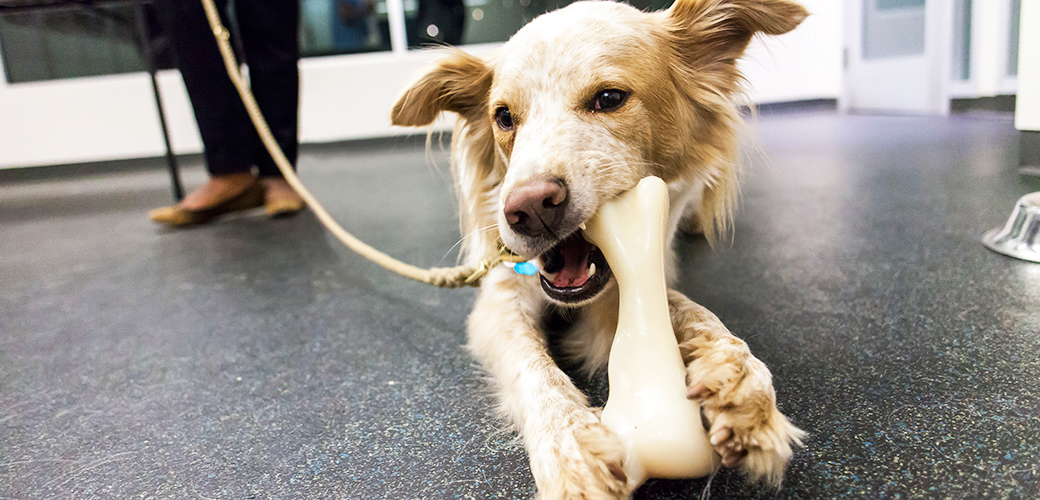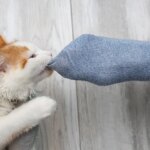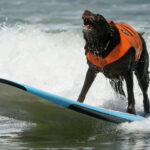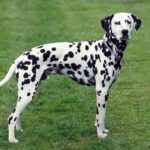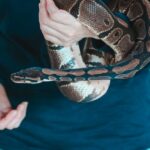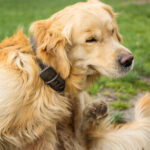If you’ve ever caught your furry friend gnawing on their sibling’s collar, you’re not alone. This curious behavior can leave pet owners puzzled and concerned. Why does one dog feel the need to chew on another’s collar, and more importantly, how can you put an end to it?
In this article, we’ll explore the various reasons behind this head-scratching habit—from playful antics and boredom to more serious behavioral issues. We’ll also provide you with practical tips and strategies to curb this collar-crunching curiosity and promote a harmonious environment for both your pups. So, let’s dive in and unpack this intriguing canine quirk together!
Table of Contents
- Understanding the Reasons Behind Collar Chewing Behavior
- Identifying Signs of Playfulness versus Anxiety
- Practical Strategies to Discourage Collar Chewing
- Creating a Positive Environment for Your Dogs to Coexist
- Q&A
- The Way Forward
Understanding the Reasons Behind Collar Chewing Behavior
Collar chewing among dogs can stem from various underlying reasons. Understanding these motives is essential for addressing the behavior effectively. One common cause of this habit is stress or anxiety. If a dog feels uneasy—perhaps due to changes in the environment, separation from their owner, or the presence of new pets or people—they may resort to chewing as a coping mechanism. Additionally, boredom plays a significant role; dogs need mental stimulation and physical activity, and if they aren’t sufficiently exercised, they might find themselves picking up habits like collar chewing simply to pass the time.
Another reason could be playfulness or attention-seeking behavior. Dogs often engage in collar chewing during playtime, especially if they learn that it gets a reaction from their fellow canine or their owner. Furthermore, this behavior might be linked to teething or oral fixation, particularly in younger dogs. Puppies, in particular, chew on anything they can find to relieve discomfort from their growing teeth. It’s also worth noting that some dogs may find certain collars appealing due to their texture or scent, which can motivate them to chew. Identifying the specific reason behind the behavior can guide pet owners toward the most effective solutions.
Identifying Signs of Playfulness versus Anxiety
Understanding whether your dog’s collar chewing behavior stems from playfulness or anxiety requires keen observation of their body language and context. Playful dogs typically exhibit loose body posture, wagging tails, and playful barks or growls. You might notice your dog initiating a chase or bowing down, signaling that they want to engage in a fun-filled exchange. In contrast, signs of anxiety can manifest as stiff body language, tucked tails, excessive panting, or attempts to hide. If the collar chewing is accompanied by these signs, it’s crucial to assess the triggers that may be causing this anxiety, such as loud noises, unfamiliar environments, or changes in routine.
To help differentiate between the two behaviors, pay attention to the following indicators:
- Playfulness: Eager energy, wagging tail, engaging with toys.
- Anxiety: Whining, pacing, destructive behavior, refusal to engage.
Creating a structured environment with a mix of playtime and relaxation can alleviate anxiety and encourage appropriate play behavior. Observing your dogs in various situations will also guide you in discerning their emotional state more accurately. With patience and understanding, you can foster a healthier interplay between your pets, minimizing unwanted collar chewing.
Practical Strategies to Discourage Collar Chewing
To effectively discourage collar chewing, begin by enhancing the overall environment for both dogs. Interactive toys can be a great distraction. Choose toys that promote engagement and keep their minds stimulated. Consider introducing a variety of textures and shapes to determine what captures their attention the most. Additionally, using bitter apple spray on the collar can deter chewing, as the unpleasant taste usually discourages further attempts. This method is both humane and non-toxic, ensuring your dog’s safety while trying to curb unwanted behavior.
Consistency in training is crucial. Establish a routine that includes positive reinforcement every time your dog refrains from chewing the collar or focuses on their own belongings. Implement commands like “leave it” or “no” to redirect their attention when they start to chew. To further reduce temptation, create a designated space for each dog, ensuring that their collars and toys are separate. This simple strategy can help prevent one dog from fixating on the other’s collar, fostering a more harmonious environment for both furry friends.
Creating a Positive Environment for Your Dogs to Coexist
To foster a harmonious atmosphere where your dogs can thrive together, it’s essential to implement strategies that emphasize positive interactions. Start by creating a designated safe space where your dogs can retreat when they need a break from each other. This space should be equipped with their favorite toys, blankets, and treats. Additionally, consider incorporating structured playtime into their daily routine. This not only allows them to bond but also helps expend their energy in a productive way. Regular walks and group activities can further solidify their relationship while reducing the chances of unwanted behaviors like collar chewing.
Another effective approach is to utilize positive reinforcement when your dogs interact appropriately. Reward them with treats or praise when they show gentle behavior towards each other, reinforcing the idea that good interactions lead to positive outcomes. You might also want to monitor and adjust their environments to minimize triggers that lead to collar chewing. For instance, if one dog is overly dominant, consider providing separate feeding areas or toys to reduce resource guarding. Below is a simple guide for creating a positive environment:
| Strategies | Benefits |
|---|---|
| Designated Safe Space | Provides comfort and security |
| Structured Playtime | Encourages bonding and energy release |
| Positive Reinforcement | Promotes good behavior |
| Separate Resources | Reduces competition and stress |
Q&A
Q1: Why does my dog chew on my other dog’s collar?
A1: Dogs are naturally curious and often explore their environment through their mouths. Chewing on another dog’s collar can stem from several reasons, including boredom, anxiety, playfulness, or even a desire to assert dominance. If your dog is particularly playful, they may simply see the collar as a fun toy. In some cases, it could also be a way of seeking attention, either from you or the other dog.
Q2: Is this behavior harmful to my dogs?
A2: Chewing on a collar can potentially lead to harm if the collar is damaged, as it may create a choking hazard or cause injury to the mouth or throat. Additionally, if the collar is adorned with tags or decorations, these could come loose and be ingested. It’s essential to monitor this behavior closely to ensure that it doesn’t become dangerous.
Q3: How can I stop my dog from chewing the other dog’s collar?
A3: There are several strategies you can employ to deter this behavior:
- Redirect Their Focus: Provide your dog with plenty of engaging toys or activities to divert their attention away from the collar.
- Use Deterrents: Applying bitter-tasting sprays designed to discourage chewing can help make the collar less appealing to your dog.
- Training: Teach your dog commands like “leave it” or “no” when they attempt to chew the collar. Consistent training and positive reinforcement can help modify this behavior over time.
- Adjust the Environment: Ensure your dogs have plenty of exercise and mental stimulation to reduce boredom. Engaging in regular playtime can help alleviate their need to chew.
- Supervision: Keep an eye on your dogs when they are together, especially if you know that collar-chewing is likely to occur.
Q4: Should I remove the collar from my other dog?
A4: Temporarily removing the collar may be a good option if chewing is persistent and poses a risk. However, collars serve practical purposes like identification and safety. If you do choose to remove it, ensure your other dog is in a secure environment where they can be safely identified in case of an escape. Consider using a breakaway collar that is designed to release under pressure, reducing potential hazards.
Q5: When should I consult a professional?
A5: If your dog’s collar-chewing behavior escalates or is accompanied by signs of aggression or anxiety, it may be time to consult a professional dog trainer or behaviorist. They can provide personalized advice and strategies tailored to your dogs’ specific needs. Additionally, if you notice any signs of injury from chewing, it’s essential to seek veterinary care promptly.
Q6: Is it common for dogs to engage in this behavior?
A6: Yes, it’s relatively common for dogs to chew on each other’s collars, particularly in multi-dog households. As social animals, dogs often engage in playful behaviors with one another, and chewing can be a way for them to interact. However, while it might seem playful, monitoring and managing this behavior is crucial to prevent potential issues.
By understanding why your dog is chewing on their companion’s collar and implementing some strategies to address it, you can foster a more harmonious environment for both of your furry friends!
The Way Forward
understanding why your dog has taken a liking to chewing on your other dog’s collar is the first step towards fostering a harmonious environment for both your pets. Whether it’s a matter of boredom, attention-seeking behavior, or simple curiosity, the good news is that there are effective strategies you can implement to curb this habit. By engaging your dogs in regular play, providing plenty of stimulating toys, and ensuring each pet has its own space and resources, you can help redirect this behavior in a positive way. Remember, patience and consistency are key, and with time, your furry friends can learn to coexist peacefully without the collar nibbles. If you find that the problem persists despite your best efforts, consulting with a veterinarian or a professional trainer can provide additional insights tailored to your dogs’ unique personalities. Happy training, and here’s to many more peaceful and playful moments with your beloved companions!




